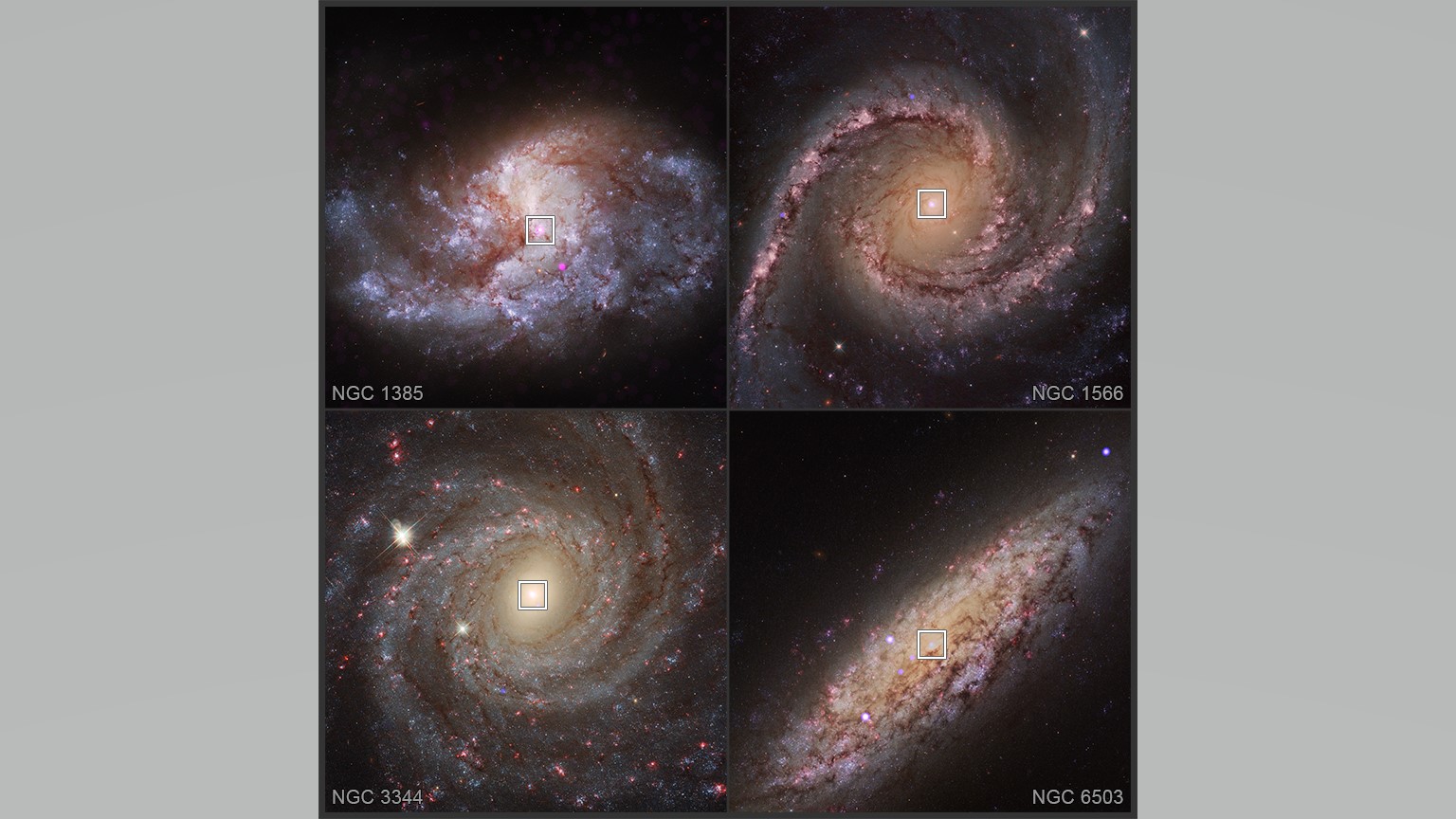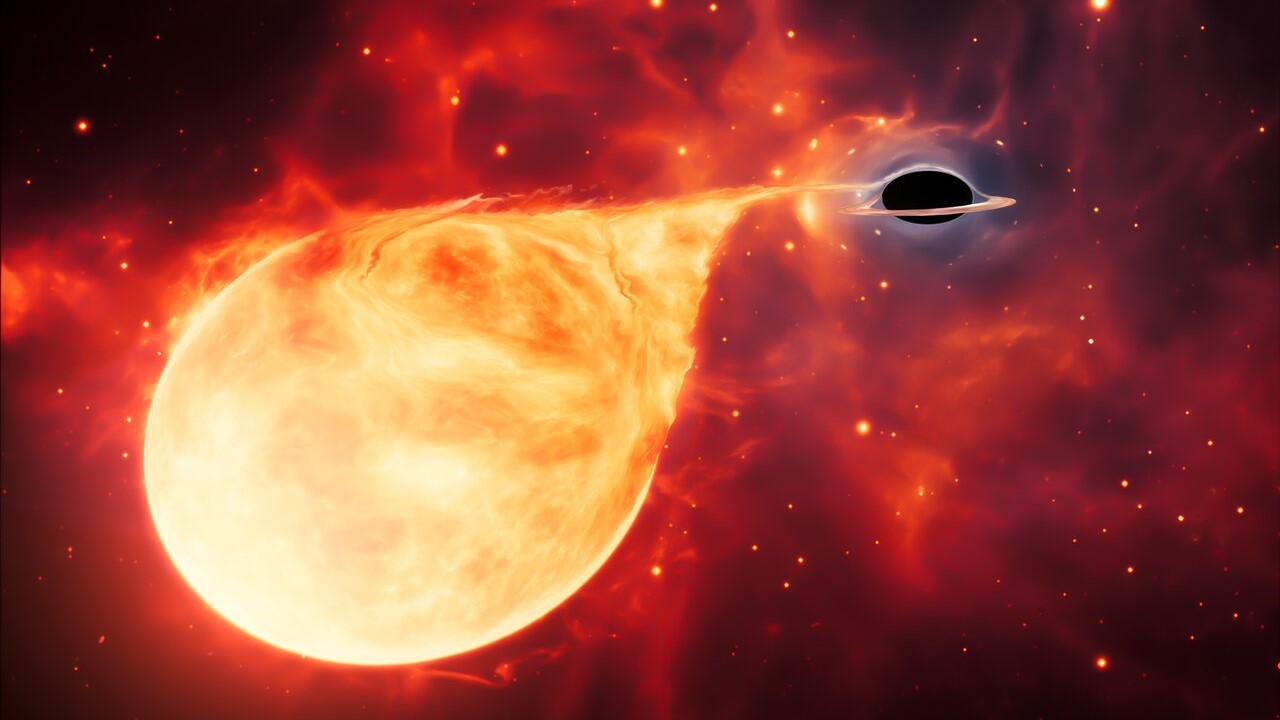Midsize black holes spotted forming in wreckage of stars
Elusive intermediate-mass black holes could be growing inside dense star clusters through a runaway process of merging with stars.
It's messy out there in the universe.
In the latest example, NASA's Chandra X-ray Observatory has found intermediate-mass black holes that are growing by ripping apart and consuming thousands of stars in over two dozen galaxies. The findings indicate that massive black holes can form at any time in the universe's history.
In a survey of 108 galaxies, Chandra identified 29 that possessed strong X-ray signatures emanating from nuclear star clusters, which are densely populated clusters at the center of many smaller and midsize galaxies. Black holes generate X-rays when they are feeding on material such as gas ripped from a star. The gas forms a spiraling accretion disk around the black hole as it waits to be consumed, and friction in the disk causes the gas to heat up to millions of degrees (Fahrenheit or Celsius), radiating X-rays.
Related: 8 ways we know that black holes really do exist

The survey, led by astronomer Vivienne Baldassare of Washington State University, concludes that nuclear star clusters can be the birthplaces of intermediate-mass black holes (IMBHs), either through the multiple collisions of massive stars, or by a massive star exploding in a supernova to create a stellar-mass black hole, which then acts as a seed for an intermediate-mass black hole (IMBH) to form through runaway growth as it shreds and consumes neighboring stars
IMBHs have masses between 100 and 100,000 times the mass of our sun, and on the cosmic weighing scales they fall between the stellar-mass black holes and the supermassive black holes, which are found in almost all large galaxies and which contain millions, if not billions, of solar masses.
However, until now, only a handful of IMBH candidates had ever been found, typically at the center of dense globular star clusters and dwarf galaxies. Finding more of these midsize black holes would help settle the debate about how they can form.
Get the Space.com Newsletter
Breaking space news, the latest updates on rocket launches, skywatching events and more!

"Many of the theories for their formation rely on conditions that are only found in the very early universe," Baldassare said in a statement. "We wanted to test another theory that says they can form throughout cosmic time in these really dense star clusters."
The results suggest that they can, if the speeds of the various stars in the cluster vary by more than a certain amount. These circumstances lead to the cluster undergoing gravitational collapse and stars and stellar-mass black holes sink to the center, instigating mergers that produce an IMBH through runaway growth.
Chandra found that the nuclear star clusters that met this criterion of star speed variation hosted twice as many growing intermediate-mass black holes as other clusters, supporting the theory.
Our Milky Way galaxy contains both a supermassive black hole and a nuclear star cluster, but it is not yet clear whether there is a link between the two. On a broader scale, the question of whether IMBHs are connected to supermassive black holes also remains unanswered.
The research is published in a paper in the 20 April issue of The Astrophysical Journal.
Follow Keith Cooper on Twitter @21stCenturySETI. Follow us on Twitter @Spacedotcom and on Facebook.
Join our Space Forums to keep talking space on the latest missions, night sky and more! And if you have a news tip, correction or comment, let us know at: community@space.com.

Keith Cooper is a freelance science journalist and editor in the United Kingdom, and has a degree in physics and astrophysics from the University of Manchester. He's the author of "The Contact Paradox: Challenging Our Assumptions in the Search for Extraterrestrial Intelligence" (Bloomsbury Sigma, 2020) and has written articles on astronomy, space, physics and astrobiology for a multitude of magazines and websites.









